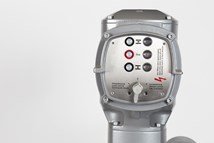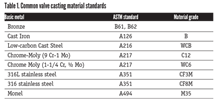Spirax Sarco's Spira-trol Steam-tight Control Valve
The control valve features a double-life, flip-over seat, lengthening the lifespan of a conventional valve.
#VMAnews
Edited by Margo Ellis

Spirax Sarco in 2021 expanded its product line to include the new Spira-trol steam-tight control valve, helping customers maximize output, minimize downtime and improve product quality. This product release has a full peak class VI shutoff double life seat, increasing the life span of the steam plant, simplifying plant maintenance throughout the life cycle of operation and driving down the total cost of ownership for customers in the food, beverage, oil, gas, chemical and healthcare industries.
“Leaking steam has a huge impact on customers’ process and profits. Spira-trol steam-tight targets the source of the problem, eliminating leaking steam control valves from the plant.” said Chris Glass, Spirax Sarco product manager.
According to Glass, the control valve has a low impact on maintenance because the valve is not required to be removed from the line and requires no special tools. This new product solution is available in sizes 1/2 in. to 4 in. and comes in SG iron, carbon steel, and stainless steel. It’s suitable for steam pressures to 275 psig, steam temperatures to 428°F, and comes with a three-year warranty. More information can be found here.
RELATED CONTENT
-
Which Gate Valve is Best for Today's Waterworks Systems?
A historical perspective may provide the answer.
-
ValvTechnologies and Severn Form Strategic Partnership
ValvTechnologies and Severn Glocon have reached a partnership agreement that will see collaboration between two of the world’s leading engineering and manufacturing companies specializing in innovative, high-end, severe-service valves.
-
New Technologies Solve Severe Cavitation Problems
An advanced anti-cavitation control valve design enabled by 3D metal printing solved a power plant’s severe cavitation problem and dramatically improved its bottom line.








 Unloading large gate valve.jpg;maxWidth=214)


